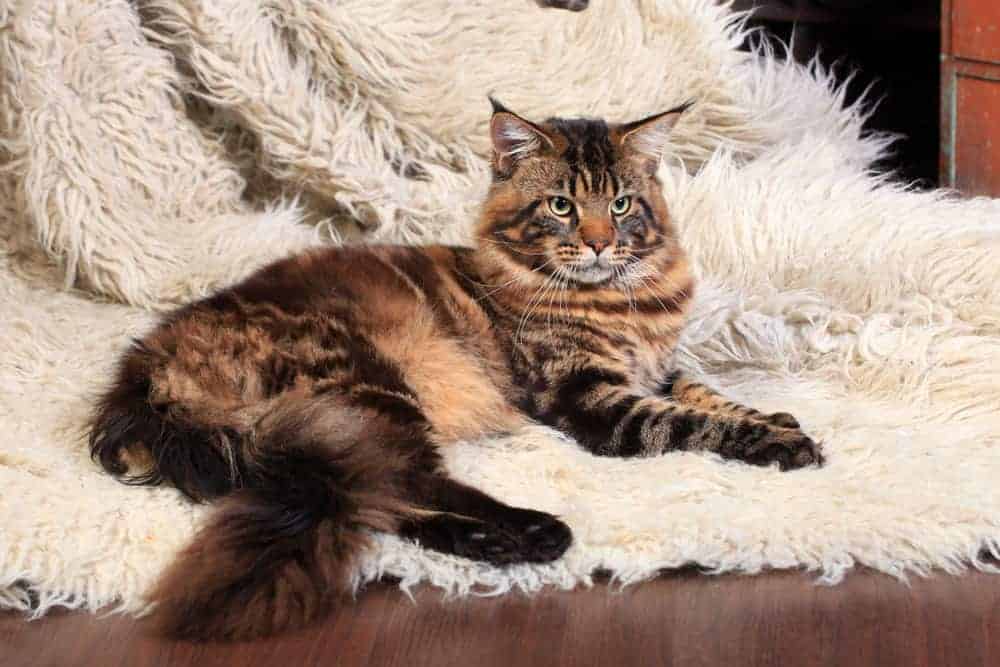
Maine Coon cat breed profile. Photo: Rosa Jay/Shutterstock
Maine Coon classification
The Maine Coon Cat is classed as Group 1 (MCO) by the Australian Cat Federation (ACF).
Maine Coon cat history
The Maine Coon has been around for many centuries. They are a natural breed of cat. The exact origins of the Maine Coon is a mystery, but there are several theories as to the origin of Maine Coons. Some theories are of the rather ‘out there’ variety such as being a cross between a house cat and a racoon but the more rational truth can probably be picked from either being a cross between a Bobcat/Wildcat and a domestic cat or coming to America as ship cats from European countries and mating with native feral cats.
Maine Coons were shown in the US during the mid-1800s but fell out of favour when Persian cats from England arrived in significant numbers. By the end of the 1950s, the Cat Fanciers Association declared the Maine Coon extinct claiming that the breed had failed to adapt to warmer climates.
However, during this time, the breed continued in the background as pets. Mrs Ethelyn Whittemore of Augusta, Maine has continued to breed Maine Coons keeping records of parents and their litters. The breed was resurrected in the 1950’s using many of the Whittemore cats and the Central Maine Cat Club (CMCC) was formed in 1953 by Alta Smith and Ruby Dwyer.
The Maine Coon was accepted with the Cat Fanciers Association (CFA) in 1975 and eventually, interest in the Maine Coon started to spread abroad with the first Maine Coon was sent to Britain in 1983.
Maine Coon physical characteristics
Overall the Maine Coon is a beautifully well-balanced cat with no extreme features.
Maine Coons are the largest breed of domestic cat in the world with females weighing between 5-7 kgs and males 6-8 kgs. They have the solid and rugged appearance which is a reminder of their working cat history. Maine Coons don’t reach their full size until they are between 3 to 5 years of age.
The body is long, strong, broad and muscular, there is a thick ruff around the cat’s neck.
Their semi-longhaired coat is of varying lengths, they were well built to survive in the harsh North American winters. It is shorter around the head and shoulders, with a ruff around the neck and chest. This coat is very water resistant and quite soft to the touch. An amazing plumed tail of large proportions finishes off this wonderful coat.
Maine Coons have large ears which are wide at the base, tapering to a pointed tip with their distinctive ear furnishings inside and the lynx tips on the top of the ears, which give them their wild look. The head is broad and is slightly longer than it is wide, the cheekbones are set high. The muzzle and chin are square, strong and blunt. Oval shaped eyes are large, wide set and beautifully expressive. The eyes can come in copper, yellow, blue or green.
Legs are muscular and well proportioned. The front legs are set wide apart, the upper hind legs have a covering of long fur known as britches. Feet and toe feathering or furnishings were also needed to enable them to run through the snow and icy waters and these keep the paw pads from getting too cold. Paws are large and round.
The tail is long, broad at the base, tapering to the tip. It is covered in thick, bushy fur.
Maine Coon personality traits

Maine Coon kitten playing. Photo: absolutimages/Shutterstock
The good-natured and affable Maine Coon adapts well to many lifestyles and personalities. He likes being with people and has the habit of following them around, but he isn’t needy. He’s happy to receive attention when you direct it his way, but if you’re busy he’s satisfied to just supervise your doings. He’s not typically a lap cat, but he does like to be near you.
Maine Coons usually enjoy a kittenish love of play well into adulthood. Not especially vocal, they make any requests in a soft chirp or trill.
Note: All cats are individuals. While there is a great difference between cat breeds there is also a difference in temperament within breeds. Temperament is affected by a number of factors, including heredity, training, and socialisation.
Maine Coon cat care
Diet – Maine Coons do not really need a special diet. They are naturally big cats that are high energy, almost kitten-like throughout their entire life. All that energy requires quality food to fuel it. A good rule of thumb for any cat’s diet is to feed a high-quality dry food mixed with occasional wet food ( 2-3 times a week).
The reason you want your coon’s food to be a good quality dry food is that they need to be able to use those teeth. Dry food can help to reduce the incidence of tartar build up on the teeth.
Talk to a veterinarian about nutritional requirements for the Maine Coon.
Grooming – Surprisingly, Maine Coon cats do not require that much grooming, despite their thick coat. These cats developed as self-sufficient outdoor animals, with no one to maintain their coats for them. As a result, they evolved into a cat with long fur that keeps them warm, repels water, and doesn’t mat very easily.
That said, they can develop mats. So, a nice brushing at least once a week should keep them in top condition. They can be trained young to enjoy grooming time, and can even tolerate bath time when needed.
Shedding – Maine Coons are no more prone to shedding than any other type of cat, but the amount of fur these cats have compared to most can sure make it seem that way. The amount of shedding with any cat is related to nutrition, genetics, changes in temperature and exposure to sunlight:
Changes in sunlight cause the cat’s brain to signal its hair follicles to respond appropriately. When there’s less sunlight, cats start growing short, fluffy secondary hairs whose job is to provide insulation. And when there’s more sunlight, cats start shedding.
An outdoor cat’s shedding cycle can be fairly predictable. It will shed more during spring and summer and retain and grow its fur in winter. But, an indoor cat, being exposed mainly to artificial light, won’t be subject to the seasonal changes that signal the brain that it’s time to shed the winter coat. Instead, it will shed year round.
Exercise and Games – There is a range of games that all cats should enjoy both inside and outside. Such games involve waving feather wand toys or other cat toys that require the cat to leap in the air and try to capture the flying object; hide and seek, pouncing, jumping and scrunching soft toys and paper are all worthwhile activities, remembering that cats have more energy to play at the beginning and end of each day.
Even if you don’t have any mice for a Maine Coon to chase, he’ll keep his skills sharp by chasing toys and grabbing them with his big paws. A Maine Coon also enjoys playing fetch and will retrieve small balls, toys or wadded-up pieces of paper. He can climb as well as any cat but usually prefers to stay on ground level. That’s where his work is, after all. He’s also very smart and will happily learn tricks or play with puzzle toys that challenge his brain.
Ideally, play with your cat twice a day for 15 minutes around the same time each day. Here are some further ideas to entertain your cat and 10 tips to keep your cat happy.
Maine Coon health issues
All in all, the Maine Coon is a healthy cat, although some Maine Coons can be prone to the following health problems:
- Hypertrophic cardiomyopathy
- Hip dysplasia
- Polycystic kidney disease
- Hemophilia
- Patellar luxation
- Arthritis
- Polydactylism (more toes than normal which are usually just cosmetic)
- Spinal muscular atrophy
- Early onset periodontal disease
- Stomatitis.
Maine Coon cats are said to live 12 to 15 years, and often more. This is partly due to the care their owners take to keep them indoors. Having your cat indoors significantly increases their lifespan.
Talk to a veterinarian about known genetic disorders for the Maine Coon.
Maine Coon suitability
The friendly, laidback Maine Coon is a perfect choice for families with children and cat-friendly dogs. He loves the attention he receives from children who treat him politely and with respect, and he doesn’t mind playing dress-up or going for a ride in a baby buggy.
He is happy to live with cat-friendly dogs, too, thanks to his amiable disposition. Introduce pets slowly and in controlled circumstances to ensure that they learn to get along together. More about smooth introductions between pets and their humans in our Paw Perfect Introductions podcast series with animal behaviourist Dr Joanne Righetti.
Always supervise interaction between a young child or other animals and your new kitten/adult cat! Find out more about creating smooth introductions in our Paw Perfect Introductions podcast with renowned animal behaviourist Dr Joanne Righetti.
More details on the Maine Coon cat breed
www.mainecoons.com.au
www.maine-coon-cat-nation.com/
Cat adoption in Australia
Visit www.petrescue.com.au for a listing of cats for adoption Australia wide.


